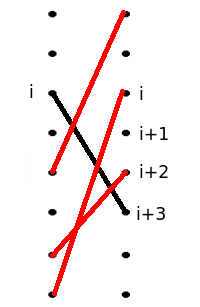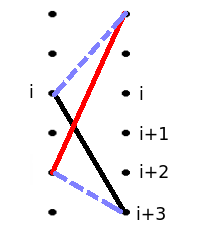Hello Codeforces Community!
I invite you to December Clash 2015. It will take place on Dec, 19-th at 9:30 MSK. Duration is 24 hours and submitting time doesn't matter so you can start whenever you want.
You will be given 5 algorithmic problems and one approximate (optimization) one. Some problems should be hard even for very strong competitors. All problems will have partial scoring (points for each test passed) and easier subtasks. Thus, everybody should find something for themselves.
EDIT — Problems are not necessarily sorted by the difficulty! Each problem is worth 100 points but scoring is partial so try to pass as many tests as possible! There is no penalty for incorrect submissions.
In my opinion problems are interesting and I hope you will have nice time solving them. It shouldn't be a typing competition for anybody. I'm very curious about the number of people with all 5 problems solved and about your scores in an approximate problem. We'll see.
I want to thank Akul Sareen (akulsareen) for his amazing help as a tester. He will also provide you editorials after a contest. And big thanks to HackerEarth admins — Arjit Srivastava (belowthebelt) and Ravi Ojha (raviojha2105).
Enjoy problems!
Oh, and there prizes. 5 T-shirts and 3 Amazon gift cards for the best participants. I guess it will make a fight for top spots a bit more interesting.
The contest is over! I hope you enjoyed it. Congratulations for top5, good job.
- mugurelionut
- Marcin_smu
- LayCurse
- zeliboba
- Carsten Eilks (HE account)
Is it a coincidence that top6 has nicely distributed scores? Roughly, the i-th place has score 510 - 10i.









 ways to divide numbers into two groups. For fixed division of numbers and for fixed position of the smallest number in
ways to divide numbers into two groups. For fixed division of numbers and for fixed position of the smallest number in  for all
for all  so it's enough to add
so it's enough to add  to the result. There is
to the result. There is  . Don't be misled by words "simple to calculate". It took me literally weeks to solve this problem and I don't say that it is easy to find the formula above.
. Don't be misled by words "simple to calculate". It took me literally weeks to solve this problem and I don't say that it is easy to find the formula above. . You can find my code above.
. You can find my code above. and
and 



 times multiplying matrices
times multiplying matrices .
. solution. We divide a sequence into
solution. We divide a sequence into  Parts. When choosing the best candidate in a Part, we want to forget about other Parts. It's enough to remember only
Parts. When choosing the best candidate in a Part, we want to forget about other Parts. It's enough to remember only  and then construct new hull for this Part in
and then construct new hull for this Part in  from complexity. First, binary search can be replaced with pointers — for each Part initially we set a pointer at the beginning of Part. To find best candidate in Part, we slowly move pointer to the right (by one). Complexity is amortized
from complexity. First, binary search can be replaced with pointers — for each Part initially we set a pointer at the beginning of Part. To find best candidate in Part, we slowly move pointer to the right (by one). Complexity is amortized  . And we can sort linear functions
. And we can sort linear functions  . Note that when rebuilding a hull, we must set pointer to the beginning of Part.
. Note that when rebuilding a hull, we must set pointer to the beginning of Part. .
. 

